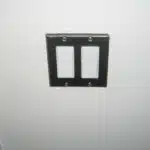As an electrician, it’s not uncommon to receive a call from someone struggling with a broken lamp. While many people may assume that rewiring a lamp is a daunting task, the truth is that it’s a relatively simple process that can be done quickly with the right tools and knowledge. By following a few basic steps, anyone can rewire their own lamps without having to seek professional help.
One of the most important things to remember when rewiring a lamp is safety. Before beginning any work on the lamp, always make sure that it’s unplugged and turned off. Additionally, be sure to use only high-quality wiring and components to ensure that your lamp will function safely and effectively for years to come. With these tips in mind, rewiring your own lamps can not only save you time and money but also give you the satisfaction of knowing that you’ve successfully completed a DIY project while serving others by providing light where it’s needed.
Assessing The State Of Your Lamp
To rewire a lamp, the first step is to assess the state of your lamp. This involves inspecting components such as the cord, socket, plug, and switch. You should check for any visible damages or wear and tear that may have occurred over time.
One common issue with lamps is frayed or damaged cords. These can be potentially hazardous and should be repaired immediately. To repair a damaged cord, you can use electrical tape or replace the entire cord if necessary. Additionally, sockets may become loose over time and need to be tightened or replaced to ensure proper function.
It is important to thoroughly inspect all components of your lamp before proceeding with any repairs. Repairing damages early on can prevent further issues down the line and ensure safe use of your lamp. Once you have assessed the state of your lamp, it is time to gather the necessary tools and materials for rewiring.
Gathering The Necessary Tools And Materials
After assessing the state of your lamp, it is important to gather all of the necessary tools and materials before beginning the rewiring process. Sourcing materials can be done by either purchasing a lamp rewiring kit or buying individual components such as a new plug, wire, socket, and switch. It is important to ensure that all of the components are compatible with each other and with the wattage of your lamp.
Once all of the necessary materials have been sourced, it is time to prepare your workspace. Make sure that you have a clean and well-lit area to work in. Gather all of your tools, including wire cutters, pliers, and a screwdriver. It may also be helpful to use a wire stripper if you are working with bare wires. Before starting any electrical work, it is important to turn off the power source and unplug the lamp.
To ensure a successful rewiring process, follow these steps:
- Choose a workspace that is free from clutter and well-lit.
- Purchase all necessary materials or components for your specific lamp.
- Ensure that all components are compatible with each other and with the wattage of your lamp.
- Gather all necessary tools before beginning work.
By sourcing appropriate materials and preparing your workspace properly, you will set yourself up for success when rewiring your lamp. The next step in this process involves choosing the right wire gauge for your specific needs.
Choosing The Right Wire Gauge
When rewiring a lamp, one of the most important decisions to make is selecting the appropriate wire gauge. The wire size should be chosen based on the wattage requirements of the lamp. Sizing a wire correctly ensures that it can handle the electrical load without overheating or causing a potential fire hazard.
It is essential to choose appropriate insulation for the wire. The insulation protects against electrical shock and prevents short circuits from occurring. There are different types of insulation available, including PVC, rubber, and Teflon. Each type has its own set of advantages and disadvantages, depending on usage and application.
Sizing wire based on wattage requirements is critical for safety reasons, but it also affects the performance of a lamp. If a wire is too thin, it may not provide enough power to light up a bulb fully. On the other hand, if it’s too thick, it can be challenging to work with when fitting into sockets or connecting to switches. Therefore, selecting an appropriate wire gauge will ensure that your newly rewired lamp will function correctly while maintaining high levels of safety.
Moving onto removing old wiring…
Removing The Old Wiring
Removing the old wiring is a crucial step in rewiring a lamp. It is important to follow safety tips to avoid accidents and injuries. First, make sure that the lamp is unplugged from the power source. This will prevent any electrical shock from occurring during the rewiring process. Additionally, wear protective gear such as gloves and goggles to protect yourself from any potential harm.
After ensuring your safety, it’s time to remove the old wiring. Start by unscrewing the base of the lamp and removing any parts that are in the way of accessing the wiring. Next, use wire cutters or scissors to cut off any damaged or frayed wires. Be careful not to touch any exposed wires with your bare hands as they may still be live even if unplugged.
Once you have removed all of the old wiring, it’s important to dispose of it properly. Do not throw it in with regular household waste as it can be harmful to the environment. Instead, look for local recycling centers or hazardous waste facilities that accept electrical materials and dispose of them there. By taking these steps, you can safely remove old wiring and contribute to a safer and cleaner environment for everyone.
Transitioning into examining the lamp’s socket: Now that you have removed the old wiring, it’s time to move on to examining the lamp’s socket. This will help you determine if there are any additional repairs needed before rewiring can take place.
Examining The Lamp’s Socket
To properly rewire a lamp, it is important to examine the socket for compatibility and troubleshoot any potential issues. The lamp’s socket is where the bulb connects to the wiring, and it plays a crucial role in regulating the flow of electricity through the lamp.
Firstly, it is essential to ensure that the socket is compatible with the type of bulb being used. Different bulbs have varying wattage ratings and base types, which can affect their compatibility with certain sockets. Using an incompatible socket can result in electrical problems and even pose a safety hazard.
If there are issues with the socket, troubleshooting steps should be taken before proceeding with rewiring or replacing it. Common socket issues include loose connections, bent contacts, or worn-out insulation. Troubleshooting may involve inspecting the wiring for damage or testing the voltage using a multimeter.
Examining socket compatibility and troubleshooting potential issues is vital for ensuring that your rewired lamp functions safely and effectively. If necessary, replacing the socket can address any unresolved problems and provide peace of mind when using your newly rewired lamp.
Replacing The Socket If Necessary
Inspecting components and testing connections are important steps to take when rewiring a lamp. Before you replace the socket, carefully examine all parts of the lamp for signs of damage or wear. Check the cord for fraying or cracks, and inspect the plug for any loose connections. Additionally, make sure that the switch is functioning properly.
Once you have inspected all components, you can move on to testing the connections. Using a multimeter, test the continuity between each component to ensure that there are no breaks in the circuit. If you find any faulty connections, replace them immediately.
If everything checks out during your inspections and tests, then it is safe to proceed with replacing the socket if necessary. Refer to your manufacturer’s instructions or consult with an electrician if you need assistance with this step. Once the new socket is installed, follow proper safety precautions when connecting wires and reassembling your lamp.
Transition: Now that you have replaced any necessary components and tested connections in your lamp, it’s time to connect new wiring.
Connecting The New Wiring
Ironically, connecting new wiring is not as simple as it may seem. It requires a certain level of technical expertise and understanding of soldering techniques. Before starting, make sure you have all the necessary tools at your disposal, including wire cutters, pliers, and a soldering iron.
To begin with, carefully review the wiring diagram for your lamp to ensure you are connecting the wires correctly. This will help prevent any potential electrical hazards that could occur due to incorrect wiring. Once you have confirmed the diagram, begin stripping the insulation from both ends of the new wire and use pliers to twist them together with the corresponding wires on the lamp.
When joining these wires together using soldering techniques, it’s important to avoid overheating or underheating them. Overheating can cause damage to the insulation or even melt wires together, while underheating can lead to a weak connection that could come apart over time. Take care to heat each connection evenly and thoroughly before applying solder and allowing it to cool completely before moving on.
- Bullet Point List:
- Use quality wire strippers for best results
- Twist wires tightly before soldering
- Apply heat evenly when soldering
With the new wiring securely connected, you’re one step closer to a fully functioning lamp. However, before moving on to testing your work by plugging it in, there is one more step: adding a new plug. This will ensure proper grounding of your lamp and further reduce any risk of electrical hazards.
Adding A New Plug
After connecting the new wiring, the next step is to add a new plug to the lamp. Choosing the right plug is important as it will determine how much power the lamp can handle. It’s crucial to select a plug that matches the wattage of the bulb and can handle enough amperage for the circuit. Furthermore, make sure to choose a plug that fits snugly into the socket and has secure connections.
When rewiring a lamp, safety should always be a top priority. Before adding a new plug, ensure that all wires are properly insulated to avoid any electrical hazards. Use wire strippers to remove about half an inch of insulation from each wire end and twist them together tightly before attaching them to the new plug. Make sure there are no frayed wires or loose connections and wrap each wire with electrical tape for extra protection.
After adding the new plug, it’s time to test the lamp’s functionality. Plug in your newly rewired lamp and turn it on to see if it works properly. If your lamp doesn’t light up or flickers when turned on, there may be an issue with your wiring or connections. Check your connections again and make sure everything is properly secured before testing it again. Once you’ve ensured that everything is working correctly, your newly rewired lamp is ready for use!
Testing The Lamp’s Functionality
- In order to test the functionality of a lamp, it is important to check the connections from the lamp’s power source.
- Inspecting the wiring for frayed, damaged, or loose connections should be a priority before testing the lamp’s light source.
- Once connections have been checked, the lamp’s light source must be tested to ensure that the bulb is working properly and is not damaged.
- To ensure the safety of the lamp, it is vital to make sure the power is turned off before inspecting or testing any components.
Testing Connections
To ensure that the rewired lamp is functioning properly, testing for continuity and using a multimeter are essential steps. Continuity testing checks if there is an uninterrupted path for electricity to flow through the circuit. This can be done by connecting one end of the multimeter to a wire or component and the other end to another wire or component. If there is continuity, the multimeter will display a reading of zero ohms.
Using a multimeter is also necessary to measure voltage and resistance in the circuit. Voltage testing checks if there is enough electrical power reaching each component, while resistance testing checks if any components are impeding or limiting the flow of electricity. By measuring these values, any issues in the circuit can be identified and corrected before turning on the lamp.
It’s important to note that even if continuity and proper voltage and resistance levels are confirmed, it’s still crucial to visually inspect all connections for signs of wear or damage. Any loose connections should be tightened, frayed wires should be replaced, and damaged components should be repaired or replaced before considering the rewired lamp fully functional.
Testing Lightbulb
After ensuring that the rewired lamp’s circuitry is properly functioning, the next step is to test the lightbulb itself. This is important because even if the circuitry is in good condition, a faulty bulb can still prevent the lamp from working. As an electrical technician or electrician, it’s crucial to know how to properly test a lightbulb to ensure its functionality.
One way to test a lightbulb is by checking for continuity using a multimeter. This involves connecting one end of the multimeter to the bottom contact of the bulb and the other end to the side contact while holding onto the metal base of the bulb. If there is continuity, then electricity should be able to flow through it unimpeded. However, if there’s no continuity, then it means that there’s a break in the filament and that particular bulb needs replacing.
It’s also important for us as electrical professionals to remind our clients of proper disposal methods for old bulbs and give them tips on choosing energy-efficient bulbs. Old bulbs should be disposed of safely and responsibly since they contain hazardous materials such as mercury and other heavy metals that can harm both people and the environment if not disposed of properly. Choosing energy-efficient bulbs can save money on electricity bills while reducing carbon footprint. By providing these additional pieces of information, we are not only testing a lamp’s functionality but also serving our clients with valuable knowledge about safe and eco-friendly practices in lighting their homes or offices.
Ensuring Safety Precautions Are In Place
When rewiring a lamp, it is crucial to prioritize safety precautions to avoid any potential hazards. One of the most important safety measures is ensuring that grounding is in place. Grounding ensures that any excess electricity flows into the ground instead of through someone’s body, which could cause electrocution. Therefore, always verify that the lamp’s metal parts are grounded before starting any rewiring work.
Another critical safety measure when rewiring a lamp is using appropriate voltage. Every lamp has its rated voltage, which should not be exceeded during any electrical work. Exceeding this voltage can cause the bulb to overload and eventually burn out quickly. In addition to this, it can also potentially start a fire or damage other electrical components of the lamp.
Lastly, it is essential to make sure all electrical components and wiring are correctly connected before plugging in the lamp. Ensure all connections are tight and secure by tugging lightly on each wire after installation. Additionally, double-check that no wires are frayed or damaged in any way as they can pose a severe risk for electric shock or fire hazard.
In summary, ensuring safety precautions such as grounding, using appropriate voltage and verifying correct connections are essential steps before plugging in a re-wired lamp. Failure to do so can result in serious consequences not only for yourself but also for others around you too. In case of doubt about how to proceed with rewiring your light fixture safely, seek professional help from a qualified electrician or technician who has experience with these types of tasks.
Next up: Troubleshooting Common Issues
Troubleshooting Common Issues
Just as a surgeon takes all necessary precautions before starting a surgery, an electrician must ensure that all safety measures are in place before rewiring a lamp. In the previous section, we discussed how to ensure safety precautions when rewiring a lamp. In this section, we will discuss troubleshooting common issues that arise during the rewiring process.
One of the most common issues faced while rewiring a lamp is frayed wires. Frayed wires can be dangerous as they can lead to electrocution or fire hazards. The best way to troubleshoot frayed wires is by identifying them early on in the rewiring process and replacing them with new wire. If you notice any frayed wires while working on your lamp, it’s important to stop immediately and replace them before proceeding any further.
Another issue faced while rewiring a lamp is loose connections. Loose connections can cause flickering lights or no power at all. Troubleshooting loose connections involves checking each connection point and tightening any screws or nuts that may have become loose over time. It’s also important to check that the correct wire gauge was used for each connection point.
In conclusion, troubleshooting common issues during the rewiring process is crucial to ensure that your newly wired lamp works safely and effectively. By identifying frayed wires early on, replacing them with new wire, and checking for loose connections, you can avoid potential hazards such as electrocution or fire hazards. In the next section, we will provide tips for avoiding electrocution while working with electricity.
Tips For Avoiding Electrocution
- Before attempting to rewire a lamp, it is important to unplug the appliance from any power sources to avoid the risk of electrocution.
- When rewiring a lamp, it is essential to wear protective gear such as rubber-soled shoes and safety glasses to protect against any electrical shock.
- Working with electricity should always be done in a dry environment, as water and electricity can be a dangerous combination.
- It is also important to avoid any contact between exposed wires and water, as this can cause electrocution.
- When rewiring a lamp, all exposed wires should be covered with electrical tape to ensure that they are insulated.
- It is recommended to have a qualified electrician inspect any wiring job to ensure it has been completed safely and correctly.
Unplug Appliances
Ensuring safety when working with electrical appliances is crucial to avoid the risk of electrocution. One of the essential measures to take before rewiring a lamp is to unplug it from the power source. This step helps prevent electric shocks and other potential accidents that could occur during the rewiring process.
Before unplugging the lamp, it’s essential to check the voltage rating of the appliance. The voltage rating should match that of your power supply to ensure safe operation. It’s also advisable to inspect the cord for any visible signs of damage, such as frays or cuts, before disconnecting it from the power source.
While unplugging an appliance may seem like a simple task, taking safety precautions should never be overlooked. These measures include wearing rubber-soled shoes and dry hands while handling electrical appliances. Also, ensure that you have turned off any switches or circuit breakers related to the appliance before unplugging it. By following these guidelines, you can minimize the risk of electrocution and other accidents when rewiring a lamp or any other electrical device.
In conclusion, unplugging an appliance is an important safety measure when working with electrical equipment such as lamps. Checking voltage ratings and inspecting cords for damage are vital steps in ensuring safe rewiring practices. Additionally, taking necessary safety precautions such as wearing rubber-soled shoes and turning off power sources will help minimize hazards. Remember always to prioritize safety when dealing with electrical appliances to avoid accidents that could result in severe injuries or even death.
Wear Protective Gear
When working with electrical equipment, safety should always be a top priority. One essential safety measure that electricians should take is to wear protective gear. Wearing protective gear offers many benefits, including reducing the risk of accidents while working with electricity, preventing injuries such as burns and cuts, and reducing the risk of electrocution.
There are several types of protective gear that electricians can consider wearing when working with electrical appliances. One example is rubber-soled shoes, which help to reduce the risk of slipping or falling on wet floors. Electricians can also wear gloves made from insulating materials to protect their hands from shocks and burns. Additionally, wearing safety glasses can prevent debris or sparks from entering the eyes.
In conclusion, when working with electrical appliances, it’s crucial to prioritize safety by wearing protective gear. Rubber-soled shoes, insulating gloves, and safety glasses are just a few examples of protective gear that electricians should consider. By taking these precautions and other necessary safety measures, electricians can minimize the risks associated with working with electricity and ensure safe practices in their field of work.
Avoid Water
When working with electrical appliances, avoiding water should be a top priority for electricians. Water is an excellent conductor of electricity, which means that if an electrical appliance comes into contact with water, it can cause electrocution. Therefore, it’s essential to take precautions when working around water and avoid contact with electrical appliances.
One precaution to take is to make sure the work area is dry before starting any electrical work. This means wiping down surfaces and ensuring that there are no wet spots on the floor or nearby objects. Additionally, electricians should never handle electrical equipment with wet hands or while standing in water as this increases the risk of electrocution.
Another way to avoid water when working with electricity is by using insulated tools. Insulated tools have a protective covering that helps to prevent electricity from passing through them and onto the person holding them. This reduces the risk of electrocution and ensures safe practices when handling electricity.
In conclusion, avoiding water is crucial when working with electrical appliances as it significantly reduces the risk of electrocution. Electricians should take precautions such as ensuring that the work area is dry before beginning any work and using insulated tools to minimize contact between electricity and water. By following these safety measures and other necessary precautions, electricians can ensure safe practices in their field of work and protect themselves from potential accidents or injuries.
Guidelines For Handling Electrical Components
When handling electrical components, it is important to prioritize safety. Before beginning any work on an electrical circuit or device, make sure that all power sources are turned off and that you have the appropriate safety gear, such as gloves and goggles. Additionally, be aware of any potential hazards in the area, such as water or flammable materials.
One common mistake when handling electrical components is not properly securing wires and connections. Loose wires can cause short circuits or even electrical fires. Make sure that all wires are securely connected and that there are no exposed wires touching other components. Use wire nuts or electrical tape to secure connections if necessary.
Another common mistake is using the wrong type of bulb for a lamp or light fixture. Always check the manufacturer’s specifications to determine the correct wattage and type of bulb for your device. Using a bulb with too high of wattage can cause overheating and potentially start a fire. By taking these precautions and avoiding common mistakes, you can ensure a safe and successful rewiring project.
Transition into subsequent section about resources for further assistance: While following these guidelines can help reduce risks when handling electrical components, sometimes you may need additional assistance or guidance. There are many resources available online or through your local hardware store that can provide further information on safe rewiring practices and troubleshooting tips.
Resources For Further Assistance
- Online tutorials can be a great resource for those looking to rewire a lamp.
- Professional lamp repair services can be contacted for assistance with wiring a lamp.
- Electrical wiring supplies are essential when rewiring a lamp, and can be found at local hardware stores.
- It is important to ensure all connections are in the correct order when rewiring a lamp.
- Adequate safety precautions should be taken when rewiring a lamp, such as using insulated gloves and eye protection.
- An understanding of electrical wiring and components is necessary to rewire a lamp efficiently and safely.
Online Tutorials
Online tutorials have become one of the most popular platforms for learning how to rewire a lamp. The internet has made it possible for individuals to access a vast amount of information on how to perform electrical tasks safely and effectively. Pros of online tutorials include their accessibility, affordability, and the ability to learn at your own pace. However, there are also some cons to consider when relying solely on online tutorials such as the lack of hands-on experience and the potential for misinformation.
One of the most popular platforms for online tutorials is YouTube. Many electricians and DIY enthusiasts have created videos demonstrating step-by-step instructions on how to rewire a lamp. Another advantage of YouTube is that users can leave comments or questions, and often receive helpful responses from other viewers. However, it’s important to note that not all YouTube videos are created by professionals, so it’s essential to verify the credibility of the source before following any instructions.
Another popular platform for online tutorials is Udemy. This website offers courses taught by professionals in various fields including electrical work. One benefit of using Udemy is that you can interact with instructors through Q&A sessions or discussions, which can provide more personalized guidance than a pre-recorded video. However, while Udemy courses are typically affordable, they do require payment which may not be feasible for those on a tight budget.
In conclusion, while online tutorials can be an excellent resource for learning how to rewire a lamp, it’s important to weigh both the pros and cons before relying solely on this method. Popular platforms like YouTube and Udemy offer advantages such as accessibility and personalized instruction; however, it’s crucial to ensure that the sources are credible and that you’re aware of potential pitfalls like misinformation or lack of hands-on experience. Ultimately, combining online tutorials with other resources such as books or professional assistance can provide a well-rounded approach to rewiring a lamp safely and effectively.
Lamp Repair Services
When it comes to repairing a lamp, there are several resources available that can provide further assistance. One option is to seek out lamp repair services offered by professionals in the field. These services can provide an array of solutions for issues such as faulty wiring, broken switches, or damaged lamp shades.
Lamp repair services offer a range of benefits for those seeking assistance with their lamps. Professionals in this field have the necessary knowledge and experience to diagnose and fix problems quickly and effectively. Additionally, they can provide guidance on issues such as bulb replacement or selecting the right type of lamp shade for your needs.
While utilizing lamp repair services may come at a cost, it can be a worthwhile investment for those who want to ensure their lamps are repaired correctly and safely. By working with experienced professionals, individuals can trust that their lamps will be functioning properly and efficiently for years to come.
Electrical Wiring Supplies
As an electrical technician, it is essential to have access to high-quality electrical wiring supplies. Where to buy these supplies can be a challenge, especially when comparing prices. There are several resources available for purchasing electrical wiring supplies, including local hardware stores and online retailers.
Local hardware stores offer the convenience of being able to see and touch the products before purchase. Additionally, they may have knowledgeable staff who can provide guidance on selecting the right type of wiring for your needs. However, prices at local stores may be higher than those found online.
On the other hand, online retailers often offer lower prices due to their ability to buy in bulk and their lack of overhead costs associated with physical storefronts. Online shopping also allows for comparison between different brands and products without leaving your home or office. However, there is a risk of purchasing counterfeit or low-quality products if not careful when choosing a trusted retailer.
Celebrating Your Diy Success!
According to a survey conducted by the National Association of Home Builders, 76% of homeowners prefer to take on DIY projects themselves instead of hiring professionals. This highlights the growing interest in DIY techniques and the desire for individuals to learn new skills and save money by doing it themselves.
To celebrate your successful rewiring of a lamp, here are three tips to inspire your next DIY project:
Research: Before starting any project, it is important to research thoroughly. Look up online tutorials and read through step-by-step guides. You can also join online forums or groups where you can ask questions and receive advice from experienced DIYers.
Safety First: Always prioritize safety when working with electricity or power tools. Make sure you have the proper protective gear, such as gloves and safety glasses, and follow all instructions carefully.
Have Fun: While DIY projects can be challenging at times, remember to enjoy the process! Celebrate your successes along the way and don’t be afraid to make mistakes – they can often lead to learning opportunities.
As an electrician or technician, it is important to stress that while rewiring a lamp may seem like a small project, it requires attention to detail and proper technique. By following these tips and celebrating your techniques, you’ll be able to take on more advanced electrical projects in no time!
Conclusion
Rewiring a lamp can seem like a daunting task for those who are not familiar with electrical components. However, with the right tools, materials, and knowledge, it can be done safely and successfully. It is important to assess the state of your lamp before beginning any work and gather all necessary items for the job.
Choosing the right wire gauge is crucial in ensuring that your lamp functions properly and does not pose any safety hazards. Removing old wiring should be done carefully and examining the lamp socket will ensure that it is up to code. Following guidelines for handling electrical components and avoiding electrocution is vital in completing this project safely. Resources for further assistance are available if needed.
Overall, rewiring a lamp is a rewarding DIY project that can save you money while adding character to your home decor. With attention to detail and caution when working with electrical components, anyone can become an expert at rewiring lamps. So go ahead and celebrate your DIY success with a well-lit room full of gorgeous lamps!
Image Credits
- “Polar Cub Bank Lamp” by alexkerhead (featured)

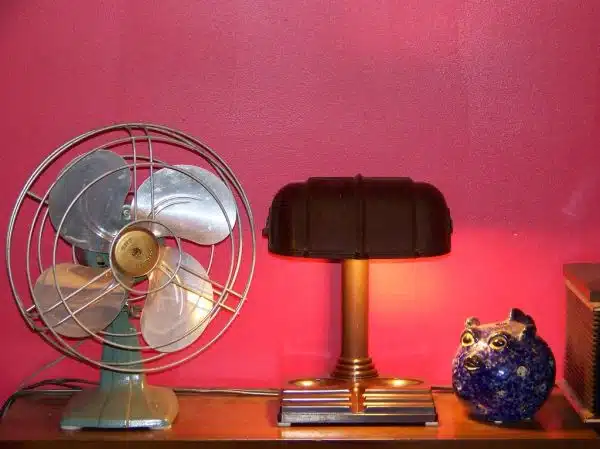


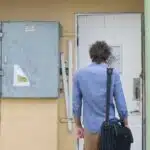

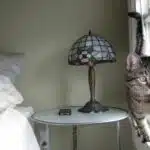


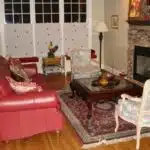

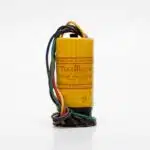





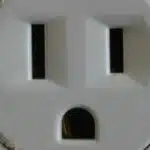



![How To Replace A Single-Pole Wall Switch 21 '... All in all it's just another [switch] in the wall.' ...](https://green-life.blog/wp-content/uploads/2023/05/17xmP5qMtVjq-150x150.jpg.webp)



